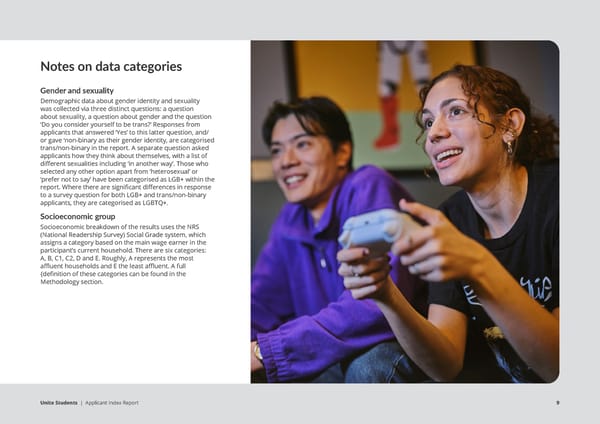Notes on data categories Gender and sexuality Demographic data about gender identity and sexuality was collected via three distinct questions: a question about sexuality, a question about gender and the question ‘Do you consider yourself to be trans?’ Responses from applicants that answered ‘Yes’ to this latter question, and/ or gave ‘non-binary as their gender identity, are categorised trans/non-binary in the report. A separate question asked applicants how they think about themselves, with a list of different sexualities including ‘in another way’. Those who selected any other option apart from ‘heterosexual’ or ‘prefer not to say’ have been categorised as LGB+ within the report. Where there are significant differences in response to a survey question for both LGB+ and trans/non-binary applicants, they are categorised as LGBTQ+. Socioeconomic group Socioeconomic breakdown of the results uses the NRS (National Readership Survey) Social Grade system, which assigns a category based on the main wage earner in the participant’s current household. There are six categories: A, B, C1, C2, D and E. Roughly, A represents the most affluent households and E the least affluent. A full {definition of these categories can be found in the Methodology section. Unite Students | Applicant Index Report 9
 Unite Applicant Index Report Page 8 Page 10
Unite Applicant Index Report Page 8 Page 10